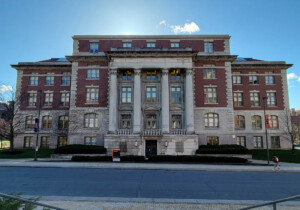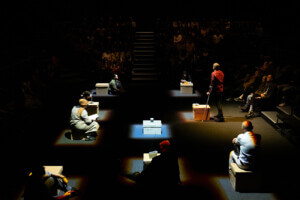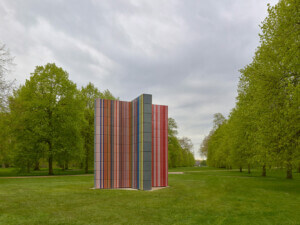It appears to be high time for the beleaguered inhabitants of London’s Neo Bankside, a Rogers Stirk Harbour + Partners (RSHP)-designed luxury development located a little too close to the Tate Modern museum, to finally invest in window treatments.
Neo Bankside’s four hexagonal towers, angular affairs constructed from steel and glass with exterior bracing that’s characteristic of RSHP, are located opposite the west entrance of the Tate Modern’s Herzog & de Meuron-designed extension. Dubbed the Blavatnik Building, the brick addition was completed to much fanfare in 2016 with its observation deck touted as a main attraction. Neo Bankside opened four years earlier in 2012.
It didn’t take long after the extension opened for residents living in certain Neo Bankside apartments to sense that they were being watched—closely watched. In addition to sweeping panoramic views of London, hordes of Tate Modern visitors were enjoying glimpses of other things from the terrace.
Per The Telegraph, one resident complained of needing to be “properly dressed” at all times, lamenting that it was impossible to enjoy a meal at his dining room table without a rapt audience watching from across the way. Another spoke of being “under surveillance” by museum-goers. A female claimant expressed that she no longer felt comfortable hosting birthday celebrations for her young daughter at home, adding: “I feel as though my life revolves around the viewing platform’s opening hours.”
Other residents claim to have been filmed, photographed, waved at, taunted, put on social media, and been subjected to lewd gestures by Tate Modern visitors, some of them wielding binoculars.
Despite what they called this, what they called a “relentless” invasion of privacy, five residents of Neo Bankside have now experienced yet another blow in an ongoing legal battle with the museum. Earlier this week, the residents lost an appeal that challenged a February 2019 ruling issued by the High Court in favor of Tate Modern.
In that ruling, Justice Anthony Mann dismissed an injunction that would have forced the Tate Modern to prevent “hundreds of thousands of visitors” from peering straight into the residents’ multi-million dollar flats across from the wildly popular 10th-floor viewing terrace. Specifically, the injunction demanded that the Tate Modern install privacy screening or block public access to sections of the viewing platform with direct views into the apartments.
As reported by The Guardian, Mann suggested that Neo Bankside residents take it upon themselves to halt the onslaught of voyeurism by simply lowering their solar shades, installing privacy film, or opting for good old-fashioned sheer curtains.
“These properties are impressive, and no doubt there are great advantages to be enjoyed in such extensive glassed views, but that in effect comes at a price in terms of privacy,” the judge explained. He went on to note that residents had “created their own sensitivity” by purchasing luxury apartments with floor-to-ceiling windows in an increasingly crowded city.
In the latest setback for the claimants, the appeal court sided with the previous ruling to throw out the injunction. “The court has dismissed the appeal on the basis that overlooking does not fall within the tort of nuisance,” explained master of the tolls Sir Terence Etherton.

In the latest ruling, the Court of Appeal also refused the claimants’ application for permission to appeal to the Supreme Court.
According to the ruling,
“Despite the hundreds of years in which there has been a remedy for causing nuisance to an adjoining owner’s land and the prevalence of overlooking in all cities and towns, there has been no reported case in this country in which a claimant has been successful in a nuisance claim for overlooking by a neighbour.”
Still, despite the most recent defeat, Natasha Rees, the head of property litigation at the law firm representing the five claimants, announced that the case was far from over.
“The leaseholders are obviously very disappointed with the outcome of the appeal, not least because they lost on a ground raised by the court of appeal,” Rees told The Guardian. “This is not a case of ‘mere overlooking’ but a situation that can clearly be distinguished from the type of overlooking experienced between residential or commercial flats and houses, a fact that was accepted by the first instance judge.”
A Tate Modern spokesperson said of the most recent ruling: “We have noted the decision of the court of appeal and are grateful for their careful consideration of this matter. We continue to be mindful of the amenity of our neighbours and the role of Tate Modern in the local community.”











